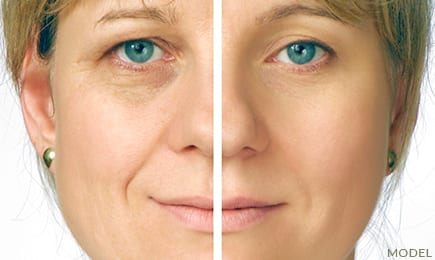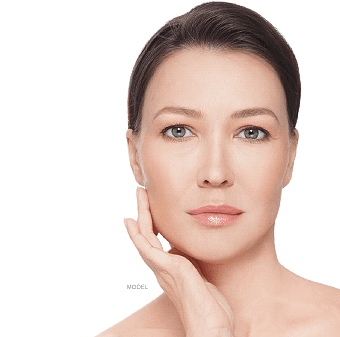Face Lift, Mini-Face Lift, Brow and Neck Lift
The terminology of Plastic Surgery is sometimes more confusing than clarifying for patients. This is especially true with the term “face lift.” The term face lift means many different things to the non-plastic surgical community. This gets more confounding when terms like “upper face lift,” “lower face lift,” mini-face lift, Lifestyle Lift®, QuickLift®, “S-Lift,” “Weekend Lift,” neck lift, and lunch time lift or “liquid face lift” get thrown around. All these terms and half a dozen others just muddy the waters. Be patient, and we’ll walk you through some of these terms and concepts and what they mean anatomically. First, Dr. Nelson believes it is important for all his patients to realize that some of these terms are largely “marketing terms” to provide a little glitz and glamour to procedures that aren’t necessarily new or innovative. Dr. Nelson could easily trademark the “Jeff-Lift” or the “Nelson-Lift,” but he would be a bit embarrassed because most of these previously listed terms are minor modifications of well-described procedures. It’s not that the terms are bad; it’s just that they can be confusing to patients as to what they mean. What makes each case enjoyable and special is the mixing of all options to get the results you are after, while not making you look “operated” on. So, here is a breakdown of all the components of facial Plastic Surgery from top to bottom so you can understand the pieces of the puzzle that might go into your “face lift”.
Brow Lift (Forehead Lift)
The brow lift is also called the forehead lift, brow plasty, or forehead plasty; they mean the same thing, and this procedure is used to soften the forehead’s transverse lines, decrease the vertical scowl lines between the brows, and reposition the brow to a slightly higher and better position. Since the skin below the brow connects to the skin of the upper eye lid, a brow lift may make the eyes appear more open and youthful. As a plastic surgeon, Dr. Nelson considers the brow/forehead area as a separate anatomical area from the area treated with the classic face lift. A brow lift may be an appropriate procedure to add as part of a face lift procedure, but it is not inherently part of a face lift because many patients don’t need a brow lift with their face lift. Brow lifts can be done with incisions placed:
- Well behind the hairline
- In front of the hairline
- In the deep wrinkles in the forehead (typically used only in men)
- Just above the hair of the brow (typically only in men)
- With an endoscope
- In the upper eyelids
Each approach has it’s good points and down sides (isn’t that true of everything), and your hairline, wrinkles, anatomy, and hair growth may all enter into the decision as to which location will be best. So, three different patients coming to the office for a brow lift might each get a different approach used for their brow lift; “one size does not fit everyone.”
Blepharoplasty (Eyelid Surgery)
The next anatomic zone down the face is the eyes. Please refer to the Eyelid Surgery procedure page for more information. Cosmetic eyelid surgery is called blepharoplasty, and the eyelids are the most frequent “added procedure” done with a face lift. Eyelid surgery is not inherently part of a face lift for several reasons:
- Some patients have had eye lid surgery long before they have considered a face lift
- Some patients have youthful looking eyes and don’t need a blepharoplasty yet
However, even if patients haven’t had eyelid surgery yet, if they have enough facial aging to need their face and neck addressed, they will likely benefit from eyelid surgery. Most often, a person’s eyelids have shown aging well before the face has shown significant changes. The focus still needs to be on you…what you want to improve and what changes you wish to address. When discussing the eyes, we consider the whole peri-orbital area (area around the eyes). Patients don’t always need a formal blepharoplasty; they may just need a little filling around the eyes or under the brow to improve the look of their eyes.
Face Lift
The classic face lift entails incisions hidden around the ears to permit the surgeon to lift the skin or deeper layers as desired and reposition the tissues. Depending on the patient, Dr. Nelson has performed several types of face lifts:
- Skin lifts
- SMAS (superficial musculoaponeurotic system…that’s a mouthful!)
- Deep plane or subperiostea
Dr. Nelson understands that you are entrusting your face to him, so he will design the right operation to fit your anatomy, genetics, and sun damage. Different approaches are best for different patients. The incisions may be similar, but what we do inside and at what level we do it may vary. After Dr. Nelson has carefully lifted the layers of skin or deeper layers, he can then suture things in place to better support the cheeks, jowls, and or neck. Some people need more vertical lift, and some people need more transverse movement of the tissues.
Neck Lift
Some people need a great deal of neck tightening, and some need very little. The neck is always included as part of a face lift. When Dr. Nelson does a true neck lift, he always does a little bit of face lifting, too, just not as much as a regular full face lift.
Mini-Face Lift
The Lifestyle Lift®, QuickLift®, “S-Lift,” and “Weekend Lift” are just a few of the marked names that are varying approaches to the mini-face lift. Frequently, these are performed under local anesthesia with light oral medication. They will utilize shorter incisions than a full classic face lift and, if appropriate, may have facial liposuction and skin resurfacing as parts of the procedure. These are perfectly adequate approaches to face lifting in the right patients. However, just realize they aren’t revolutionary; they are simply names given to an approach and then marketed under that name.

When Dr. Nelson performs a mini-face lift, it might be very similar to any one of these procedures; he just can’t call it by the marketed name because he is not part of their “system.” What makes these mini-face lifts appealing is the lack of general anesthesia, and patients love the idea of things that sound like less and promise more. Just hope that if you are seeing a board-certified plastic surgeon that he or she will be honest with you and direct you along the right path to best accomplish your goals. In Dr. Nelson’s mind, the thing that is more revolutionary in mini or regular face lifting today is the greater finesse available with micro liposuction, fat injections, other injectables, deep tissue support suturing, and less invasive forms of skin resurfacing that allow these procedures to be blended together to, as Dr. Nelson puts it, “accomplish more with less” on behalf of the patient. Of course, sometimes Dr. Nelson has to do more to accomplish more; it depends on the canvas that he is working with. If a patient just has enormous laxity in their face and neck and tons of sun damage, they have to be realistic and understand that a mini-face lift isn’t going to cut it; they will be dissatisfied with the result and need to do more and not less. At the same time, I’ve had numerous patients think they needed a full face lift, but a mini-face lift with some simple injectables and possibly mild skin resurfacing met their desired results.
Summary
The key for you, the patient, is to tell Dr. Nelson the things you wish to improve, and he will explain in clear language how he will fix those issues and where the incisions will be. Then you will understand what’s going on and not have to worry about the exact “name” it was given. In summary:
- Don’t get too caught up in terms and marketing
- Make sure you have a good connection with the surgeon
- Make sure your surgeon understands your desires
- Make sure your surgeon goes over typical results of some of the procedures you discuss
Terms are just terms. You want an individualized approach to your face, your anatomy, and your desires. Then you can focus with your surgeon on what is best and what is realistic. I hope this helps somewhat with the different approaches to face lifting and other facial procedures, please let us know how we may further help you as you move forward.
